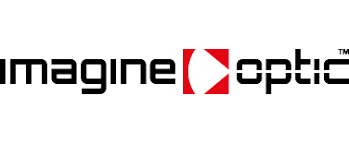


Location
France

Industry
Manufacturing
Company Overview
Imagine Optic is the leading provider of wavefront metrology and adaptive optics solutions, manufacturing wavefront sensors designed to provide a granular analysis of the optical properties of materials, as well as correction features. The company has grown its know-how alongside prestigious clients in the academic and industrial markets, including Harvard, Apple, Google, NASA, and more.
- Industry: Optical and photographic equipment
- Founded: 1996
- Headquarters: Orsay, France
- Revenue: 7 million euros
- Headcount: 60
- Website: www.imagine-optic.com
A High-Tech Company with Diversified Initiatives
Imagine Optic’s Technical Department is simultaneously managing upwards of 50 projects, all varying in terms of scope, workload, timelines, and requirements.
For example, “Engineer to order” projects require the company to work like an external engineering and design department for clients in need of rapid specific technical fixes. Product R&D projects raise research tax credit optimization issues. Finally, exploratory R&D programs, subsidized by research agencies and spanning several years, are more like marathons.
Despite their aforementioned variance, all of Imagine Optic’s projects involve a high level of technical risk and share common resources. This requires the organization to be thorough and insightful when managing its project portfolio.
A Gradual Formalization of the Project Management Process
Although a project tracking system was in place within the company as early as 2001, the project management process remained informal until the late 2000s. In 2012, Imagine Optic adopted MS Project to manage its capacity plans.
However, growth in business and project activity soon revealed the limits of this system. Between 2014 and 2016, an influx of new recruits (most of whom were young engineers with no real project management culture) led to the abandonment of MS Project, as each project manager was building their own tracking tools.
Manual data entries, data duplication across tools, and constant firefighting mode, highlighted the need for a consolidated project management process. This led to the creation of the PMO function.
From Frustrations to Specifications
Mindful of the need for a professional project management tool, Pauline Treimany, the new PMO manager, mapped and analyzed the shortcomings of the system in place.
The most obvious issue was the lack of centralized planning and management. Data consolidation and reporting was tedious, due to the diversity of project managers’ tracking tools and methods. Inefficient flows of information aggravated the impact of resource interdependencies. A lack of bottom-up feedback and executive reporting made it difficult for decision-makers to strategically plan ahead.
From an organizational point of view, this absence of a consolidated overview further caused recurring project delays and overruns.
Accordingly, in 2016, Imagine Optic started looking for a platform offering a comprehensive view of resources and projects to improve coordination and efficiency.
Sciforma: The “Common-Sense” Choice
Sciforma was chosen for a number of criteria.
From a functional perspective, the tool covers both project management (timesheets, progress tracking, planning, etc.) and portfolio management (executive planning, resource utilization, visualization filtering, capacity leveling, simulations, etc.) processes.
The Sciforma solution also stood out for the quality of its user experience. Imagine Optic particularly appreciated the balance it offers between flexibility (responsiveness, scalability, customization) and structure (with safeguards and a straightforward framework to guide users who are not necessarily project management professionals).
And let’s not forget the competitive pricing of the solution.
A lot of Sciforma’s native functionality is common sense. That is, if you think about it for a moment, you’ll quickly realize that it makes perfect sense to do things this way!
Pauline Treimany, PMO and COO
So much so that, in late 2022, Imagine Optic decided to expand its partnership with Sciforma by migrating to version 7.1, in order to benefit from augmented capabilities such as project grouping, REST API, and hybrid project management.
I was blown away by the speed of the software upgrade.
Pauline Treimany, PMO and COO
Common Sense in Action
Since adopting Sciforma, the company gained the ability to anticipate delays and notify stakeholders, streamlining collaboration between departments and project teams.
Clear automated reports empower team members and decision-makers, who are no longer dependent on human data consolidators and can make fact-based calls.
From a financial point of view, the company can now run a profitability analysis to better understand the business and identify drivers of optimization. Research tax credit and subsidy reports are now much easier to put together and more reliable.
Finally, the identification of bottlenecks improves capacity requirement assessments by type of project.
What’s Next?
Among the items on the agenda is the continuation of project manager training and change management. To encourage adoption, Imagine Optic’s PMO set up mentoring programs and consistently provides practical demonstrations of the tool’s value to show users what’s in it for them.
She advocates taking a pragmatic approach to training and adoption programs, heeding each individual’s specificities.
To convince team members to change their habits, you need to accept their reluctance rather than pretending that everything is going to be simple. You also need to accept doubts, and, sometimes, deal with grumblings and try to put things in perspective when possible!
Pauline Treimany, PMO and COO
Finally, Imagine Optic plans to interface Sciforma with other key tools used internally.





